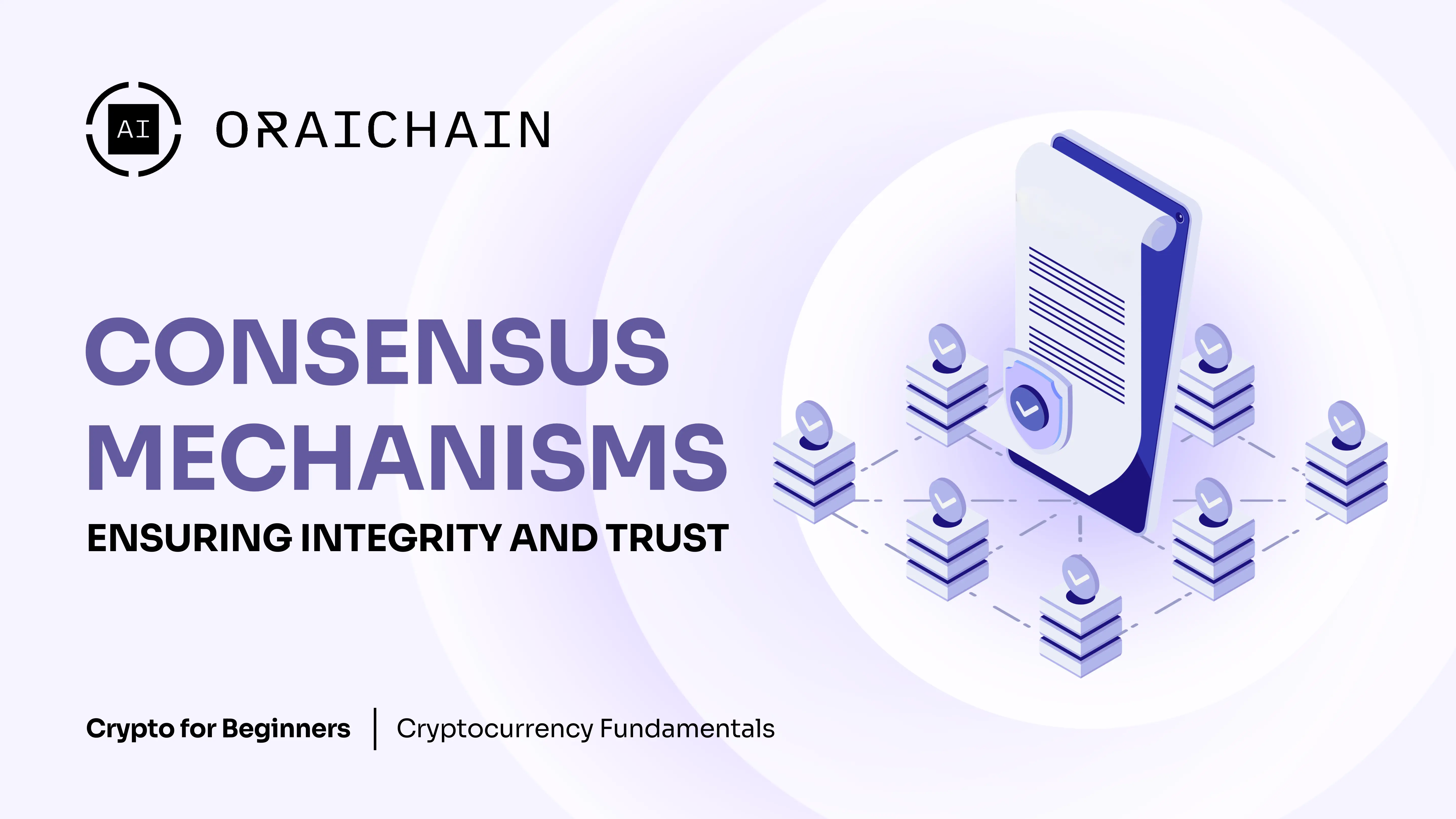Consensus Mechanisms in Blockchain: Ensuring Network Integrity and Trust

Consensus mechanisms are essential components of decentralized systems, particularly in blockchain networks where centralized authorities are absent. These mechanisms enable collective agreement among participants, ensuring transaction validity and immutability. Let's delve deeper.

What is a Consensus mechanism?
A consensus mechanism is a set of rules or protocols that enable participants in a decentralized network to agree on the validity of transactions and the order in which they are added to the blockchain. It ensures that all nodes in the network reach a common understanding of the current state of the ledger without the need for a central authority.
The Role of Consensus in Achieving Distributed Trust:
- Decentralization: Consensus mechanisms facilitate decentralization by distributing control and decision-making across a network of participants. This eliminates the need for a central authority, reducing the risk of censorship, manipulation, or single points of failure.
- Transaction Validation: Consensus mechanisms validate and authenticate transactions before they are added to the blockchain. By reaching agreement on the validity of transactions, participants ensure that only legitimate transactions are recorded on the ledger.
- Immutability: Once a transaction is confirmed and added to the blockchain through consensus, it becomes immutable, meaning it cannot be altered or deleted. This ensures the integrity and tamper-proof nature of the data stored on the blockchain.
- Security: Consensus mechanisms provide security by making it economically and computationally expensive for malicious actors to tamper with the blockchain. Through mechanisms such as Proof of Work (PoW) or Proof of Stake (PoS), participants are incentivized to act honestly and are penalized for attempting to manipulate the network.
In the context of blockchains and cryptocurrencies, Proof of Work (PoW) and Proof of Stake (PoS) are two of the most prevalent consensus mechanisms. These mechanisms play a crucial role in securing information by encrypting it and using automated group verification.
Detailed Exploration of the PoW mechanism and PoS mechanism
Proof of Work (PoW)
In the world of cryptocurrencies, Proof of Work (PoW) stands as a cornerstone, ensuring the integrity and security of transactions within decentralized networks. But what exactly is PoW, and why is it so crucial?
What is Proof of Work?
At its essence, Proof of Work is a consensus mechanism employed by cryptocurrencies to validate new transactions added to the blockchain. In decentralized networks, lacking any central authority, PoW acts as a guardian, ensuring the accuracy and trustworthiness of incoming data.
How Does Proof of Work Operate?
Cryptocurrencies operate without central gatekeepers, relying instead on a distributed network of participants, or miners, to validate and add transactions to the blockchain. PoW determines which miners get the opportunity to validate these transactions, rewarding them with new cryptocurrency for their efforts.
PoW functions by requiring miners to compete in solving complex mathematical puzzles, known as hashes. These puzzles are designed to be computationally intensive, ensuring that only the most diligent and resourceful miners are successful in validating transactions.
Importance of Proof of Work
The significance of PoW cannot be overstated, particularly in the context of cryptocurrencies like Bitcoin, where it was initially introduced by Satoshi Nakamoto in 2008. PoW addresses critical issues such as the double-spend problem, ensuring that transactions are securely recorded and preventing fraudulent activities within the network.
How Does Proof of Work Mining Work?
Mining, the process by which transactions are validated through PoW, involves several key steps:
- Transaction Pooling: New transactions are grouped together into blocks.
- Competition: Miners compete to solve complex math problems, aiming to be the first to find a valid hash for the block.
- Verification: Once a miner finds a valid hash, other nodes in the network verify its accuracy and integrity.
- Block Addition: The miner who successfully validates the block is rewarded with new cryptocurrency coins, and the block is added to the blockchain.
Criticisms of Proof of Work
While PoW has been instrumental in ensuring the security of cryptocurrencies, it has also faced criticism, particularly concerning:
- Energy Consumption: The energy-intensive nature of PoW mining has raised environmental concerns.
- Centralization: Mining operations have become centralized in a few major entities, potentially undermining the decentralized ethos of cryptocurrencies.
Proof of Stake (PoS)
What is Proof of Stake?
Proof of Stake serves as a consensus mechanism utilized by cryptocurrencies to determine which network participants have the privilege of validating new transactions and adding them to the blockchain. Unlike traditional financial systems with central gatekeepers, PoS relies on a decentralized network of validators to uphold the integrity of transactions.
How Does Proof of Stake Work?
In PoS, validators lock up a predetermined amount of cryptocurrency, known as their stake, in a smart contract on the blockchain. This stake serves as collateral, ensuring that validators have a vested interest in accurately validating transactions. Validators are then selected based on the size of their stake to validate new blocks of data added to the blockchain. By doing so, validators earn rewards in the form of newly minted cryptocurrency.
Benefits of Proof of Stake
- Environmental Efficiency: Unlike Proof of Work, PoS consumes significantly less energy, making it more environmentally friendly.
- Accessibility: PoS allows a broader range of participants to engage in transaction validation, as it does not require expensive computing resources.
- Scalability: PoS blockchains have the potential to support more simultaneous transactions without compromising security or decentralization.
Drawbacks of Proof of Stake
- Security Concerns: PoS has not undergone the same level of scrutiny as Proof of Work, potentially leaving blockchains vulnerable to certain types of attacks.
- Centralization Risk: Validators with large stakes may wield disproportionate influence over the network, potentially undermining decentralization.
- Complex Migration Process: Transitioning from PoW to PoS is a meticulous process, requiring careful planning to ensure the blockchain's integrity throughout the transition.
Proof of Work VS Proof of Stake
Proof of Work | Proof of Stake |
Block creators are called miners | Block creators are called validators |
Participants must buy equipment and energy to become a miner | Participants must own coins or tokens to become a validator |
Not energy efficient | Energy efficient |
Robust security | Security through community control |
Miners receive block as rewards | Validators receive transactions fees as rewards |
Cryptocurrencies using PoW: Bitcoin (BTC), Dogecoin (DOGE), Bitcoin Cash (BCH), Litecoin (LTC), Monero (XMR), etc. | Cryptocurrencies using PoS: Cardano (ADA), Tron (TRX), EOS (EOS), Cosmos (ATOM), Tezos (XTZ), etc. |
Explore beginner-level crypto knowledge at orai.io to confidently start your journey with expertise!



